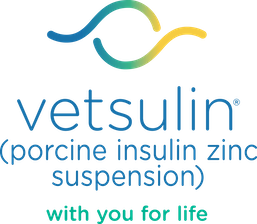

Managing Hyperosmolar Syndrome
Read More About Feline Diagnosis & Management
Proper Management to Avoid Complications
Hyperosmolar syndrome is an uncommon complication of untreated feline diabetes mellitus. In animals in which target tissue resistance to insulin plays a role in the disease, insulin levels can be elevated. In these cases, ketosis is suppressed, and plasma glucose concentrations can become very high.
Diagnosis
Physical examination often reveals profound dehydration, and the cat is typically lethargic, extremely depressed, or comatose. The severity of the hyperosmolality correlates directly with the severity of these signs.
Hyperosmolar syndrome represents an emergency situation. Affected cats will become progressively weaker, anorexic, lethargic, and drink less. Ultimately, blood glucose levels become so high that osmosis shifts water from brain cells and coma results.
Management Guidelines
Goals of management include correcting fluid deficits and electrolyte balance associated with severe dehydration, reducing blood glucose via insulin therapy, correcting the hyperglycemic, hyperosmolar state, and managing concurrent diseases.
Fluid therapy is critical to alleviate this syndrome, especially in the first 4 to 6 hours of management. The goal is to reduce blood glucose at the rate of 50 mg/dL/hr. When the blood glucose approaches 300 mg/dL, the IV fluid selection should be changed to 5% dextrose solution.
Intravenous isotonic fluid and insulin therapy usually resolve hyperosmolality but must be done slowly to minimize the shift of water from the extracellular to the intracellular compartment.
Delay insulin therapy (typically 4–6 hours) until fluid therapy has improved the cat’s condition, corrected dehydration and improved urine production, hyperglycemia, hyperosmolality, and electrolyte levels.
Evaluation of Treatment
When evaluating the effectiveness of fluid therapy, also monitor:
- Urine
- Blood pressure
- Blood glucose
- Serum electrolytes
- BUN and urine glucose
Help Your Practice Manage Diabetes Mellitus
Check out these tools and resources to help manage feline diabetes.

Blood Glucose Curve Generator
Create a blood glucose curve to monitor and evaluate diabetes treatments.

Client Discharge Form
Create a customized, printable form for clients about their new diagnosis.

Diabetes Resources
Access online tools and more to support staff and pet parents.
No items to show.
Read More About Feline Diagnosis & Management
Important Safety Information:
Vetsulin® should not be used in dogs known to have a systemic allergy to pork or pork products. Vetsulin is contraindicated during periods of hypoglycemia. Keep out of reach of children. As with all insulin products, careful patient monitoring for hypoglycemia and hyperglycemia is essential to attain and maintain adequate glycemic control and prevent associated complications. Overdosage can result in profound hypoglycemia and death. The safety and effectiveness of Vetsulin in puppies, breeding, pregnant, and lactating dogs has not been evaluated. See package insert for full information regarding contraindications, warnings, and precautions.
References:
1. Martin GJ, Rand JS. Pharmacology of a 40 IU/ml porcine lente insulin preparation in diabetic cats: findings during the first week and after 5 or 9 weeks of therapy. J Feline Med Surg. 2001;3(1):23–30. 2. Vetsulin® (porcine insulin zinc suspension) [Freedom of Information Summary]. Millsboro, DE: Intervet Inc.; 2008. 3. Data on file, Merck Animal Health. 4. Graham PA, Nash AS, McKellar QA. Pharmacokinetics of porcine insulin zinc suspension in diabetic dogs. J Small Anim Pract. 1997;38(10):434–438. 5. Martin GJ, Rand JS. Pharmacokinetic and Pharmacodynamic Study of Caninsulin in Cats with Diabetes Mellitus. 2000: Internal Study Report. 6. Feldman EC, Nelson RW. Canine and Feline Endocrinology and Reproduction. 3rd ed. St. Louis, MO: Saunders; 2004:539–579. 7. Tennant B, ed. BSAVA Small Animal Formulary. 4th ed. Gloucestershire, UK: British Small Animal Veterinary Association; 2002. 8. Feldman EC, Nelson RW. Canine and Feline Endocrinology and Reproduction. 3rd ed. St. Louis, MO: Saunders; 2004:486–538. 9. Reusch C. Feline diabetes mellitus. In: Ettinger SJ, Feldman EC, eds. Textbook of Veterinary Internal Medicine. 7th ed. St. Louis, MO: Saunders; 2010:1796–1816. 10. Nelson RW. Canine diabetes mellitus. In: Ettinger SJ, Feldman EC, eds. Textbook of Veterinary Internal Medicine. 7th ed. St. Louis, MO: Saunders; 2010:1782–1796. 11. Burgaud S, Riant S, Piau N. Comparative laboratory evaluation of dose delivery using a veterinary insulin pen. In: Proceedings of the WSAVA/FECAVA/BSAVA congress; 12–15 April 2012; Birmingham, UK. Abstract 121. 12. Burgaud S, Guillot R, Harnois-Milon G. Clinical evaluation of a veterinary insulin pen in diabetic dogs. In: Proceedings of the WSAVA/ FECAVA/BSAVA congress; 12–15 April 2012; Birmingham, UK. Abstract 122. 13. Burgaud S, Guillot R, Harnois-Milon G. Clinical evaluation of a veterinary insulin pen in diabetic cats. In: Proceedings of the WSAVA/FECAVA/BSAVA congress; 12–15 April 2012; Birmingham, UK. Abstract 45. 14. Davison LJ, Walding B, Herrtage ME, Catchpole B. Anti-insulin antibodies in diabetic dogs before and after treatment with different insulin preparations. J Vet Intern Med. 2008;22:1317-1325. 15. Banfield State of Pet Health 2016 Report. p 12-13.
